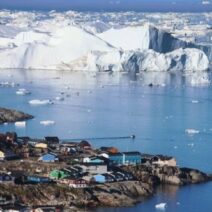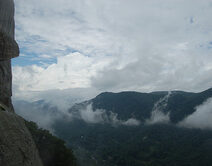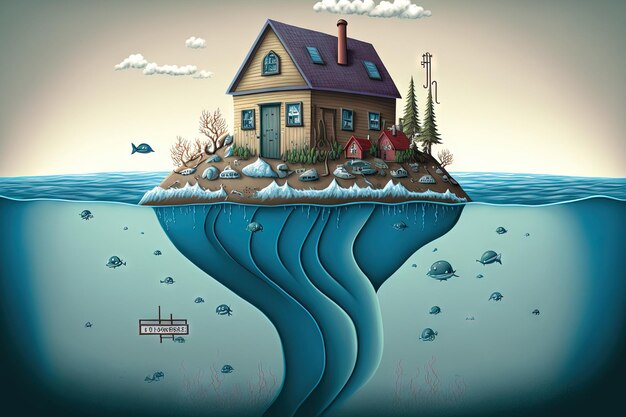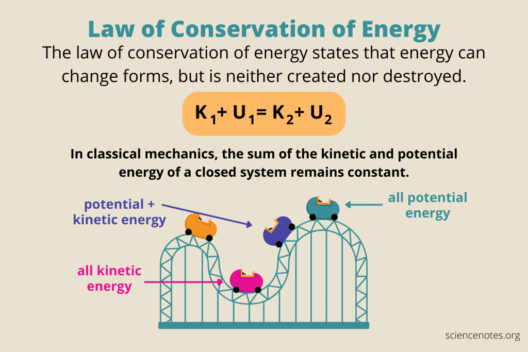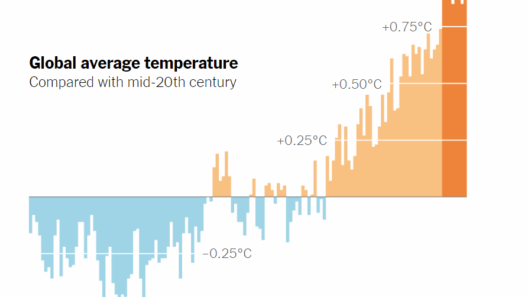Rising sea levels represent one of the most pernicious consequences of global warming. The phenomenon stems from two primary mechanisms: the melting of glaciers and polar ice caps, coupled with the thermal expansion of seawater as it absorbs heat. These dynamics produce profound implications for coastal ecosystems, human settlements, and the global economy. It is imperative to explore the multifaceted aspects associated with rising sea levels to understand their future impact on our coasts.
Firstly, it is crucial to comprehend the underlying science behind rising sea levels. When global temperatures rise, glaciers and ice sheets situated in Antarctica and Greenland begin to melt at an accelerated pace. The water released from these vast bodies of ice flows into the oceans, contributing to an increase in sea levels. According to scientific research, polar regions are warming at two to three times the global average, exacerbating this issue. Additionally, as ocean temperatures rise, the water occupies more space, a phenomenon known as thermal expansion, which further elevates sea levels.
The ramifications of rising sea levels are extensive. Coastal regions are particularly vulnerable as they already experience chronic flooding, erosion, and saltwater intrusion into freshwater aquifers. Cities located in low-lying areas, such as Miami, New Orleans, and parts of Bangladesh, face an immediate existential threat. Rising tides can inundate infrastructure, displace communities, and damage local economies that depend heavily on tourism, fishing, and agriculture.
As events unfold, the potential displacement of populations due to rising sea levels poses significant socio-economic challenges. Climate refugees, defined as individuals forced to abandon their homes due to environmental changes, are becoming increasingly common. The United Nations estimates that by 2050, tens of millions of people may be displaced, leading to social pressures and geopolitical instability. This outcome reinforces the urgency for proactive policies geared towards climate adaptation and mitigation.
Another critical area of concern is the effect of rising sea levels on coastal ecosystems. Estuaries, wetlands, and mangrove forests serve as natural buffers against flooding and provide vital habitats for numerous species. However, the encroachment of saltwater during storm surges and high tides compromises these ecosystems, resulting in loss of biodiversity and impaired ecological functions. The degradation of these natural buffers diminishes their ability to protect coastlines, precipitating further erosion and habitat loss.
The economic implications of rising sea levels are far-reaching. Property values in vulnerable coastal areas are in jeopardy, leading to a decline in investment and overall economic stability. Insurance companies may raise premiums or withdraw coverage altogether in high-risk regions, making homeownership and business operations more precarious. The costs associated with infrastructure repairs and adaptation strategies can strain municipal budgets, necessitating governmental intervention and long-term planning.
To address the challenges posed by rising sea levels, various mitigation strategies must be considered. One approach is the construction of barriers, such as seawalls and levees, which are designed to protect coastal communities from inundation. While these structures can be effective in the short term, they may have adverse environmental impacts and can be prohibitively expensive to maintain over time. As sea levels continue to rise, these adaptive measures must be continually evaluated for efficacy and sustainability.
Another avenue for addressing the issue is through ecosystem-based adaptation. This involves the restoration and conservation of natural habitats that enhance coastal resilience, such as mangroves and salt marshes. By nurturing these ecosystems, society can leverage their intrinsic ability to buffer against sea-level rise while simultaneously fostering biodiversity and carbon sequestration. Ultimately, investing in nature-based solutions can yield dual benefits for both the environment and human communities.
Furthermore, urban planning plays a key role in future-proofing our coastlines. Strategic zoning regulations can restrict further development in high-risk areas, allowing for the preservation of natural landscapes. Moreover, integrating green infrastructure—such as permeable pavement, green roofs, and rain gardens—into urban design can enhance stormwater management and reduce runoff, thereby diminishing the risk of flooding.
International collaboration is essential in combating the global challenge of rising sea levels. Climate change knows no borders, and effective action requires cooperation among nations. Investment in scientific research, technology transfer, and capacity-building initiatives can foster a unified global response. Moreover, financial assistance for developing countries grappling with the impacts of climate change is critical in ensuring equitable adaptation efforts worldwide.
In conclusion, the confluence of rising sea levels and global warming portends a daunting future for coastal regions worldwide. The multifaceted impacts—ranging from ecological degradation to socio-economic displacement—underscore the urgency for comprehensive strategies to mitigate and adapt to these changes. Through a combination of engineering solutions, nature-based approaches, and proactive policies, communities can enhance their resilience. As stewards of our planet, immediate action is not merely preferable; it is necessary to secure a sustainable future for generations to come.

